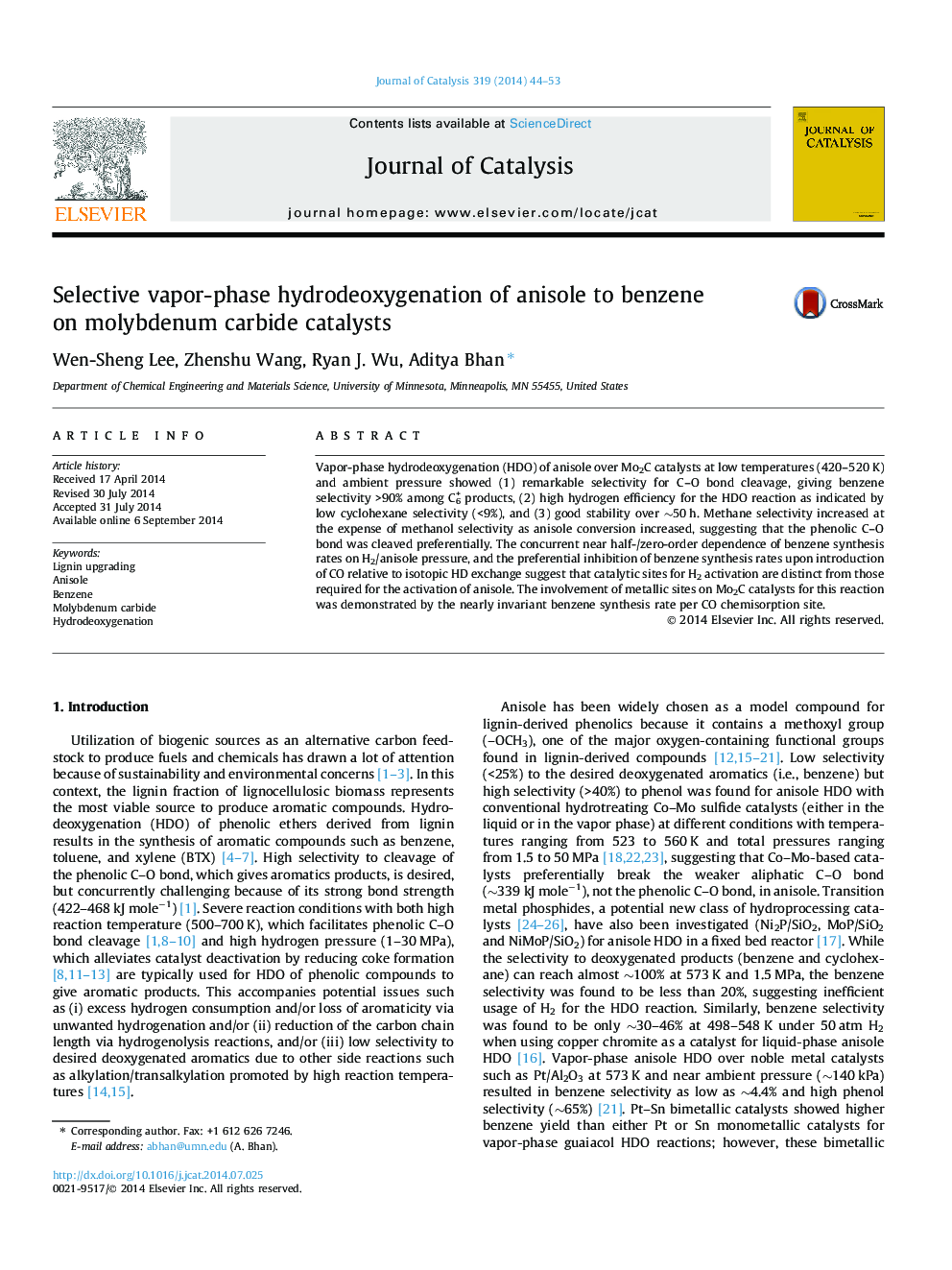| Article ID | Journal | Published Year | Pages | File Type |
|---|---|---|---|---|
| 60993 | Journal of Catalysis | 2014 | 10 Pages |
•Mo2C was used for vapor-phase anisole HDO at low temperatures (420–520 K) under ambient pressure.•High benzene selectivity (>90%) and high hydrogen efficiency (cyclohexane selectivity <9%).•Two distinct sites are required; metallic sites are involved in HDO chemistry over Mo2C.•The strong phenolic C–O bond was cleaved preferentially during anisole HDO.
Vapor-phase hydrodeoxygenation (HDO) of anisole over Mo2C catalysts at low temperatures (420–520 K) and ambient pressure showed (1) remarkable selectivity for C–O bond cleavage, giving benzene selectivity >90% among C6+ products, (2) high hydrogen efficiency for the HDO reaction as indicated by low cyclohexane selectivity (<9%), and (3) good stability over ∼50 h. Methane selectivity increased at the expense of methanol selectivity as anisole conversion increased, suggesting that the phenolic C–O bond was cleaved preferentially. The concurrent near half-/zero-order dependence of benzene synthesis rates on H2/anisole pressure, and the preferential inhibition of benzene synthesis rates upon introduction of CO relative to isotopic HD exchange suggest that catalytic sites for H2 activation are distinct from those required for the activation of anisole. The involvement of metallic sites on Mo2C catalysts for this reaction was demonstrated by the nearly invariant benzene synthesis rate per CO chemisorption site.
Graphical abstractFigure optionsDownload full-size imageDownload high-quality image (145 K)Download as PowerPoint slide
